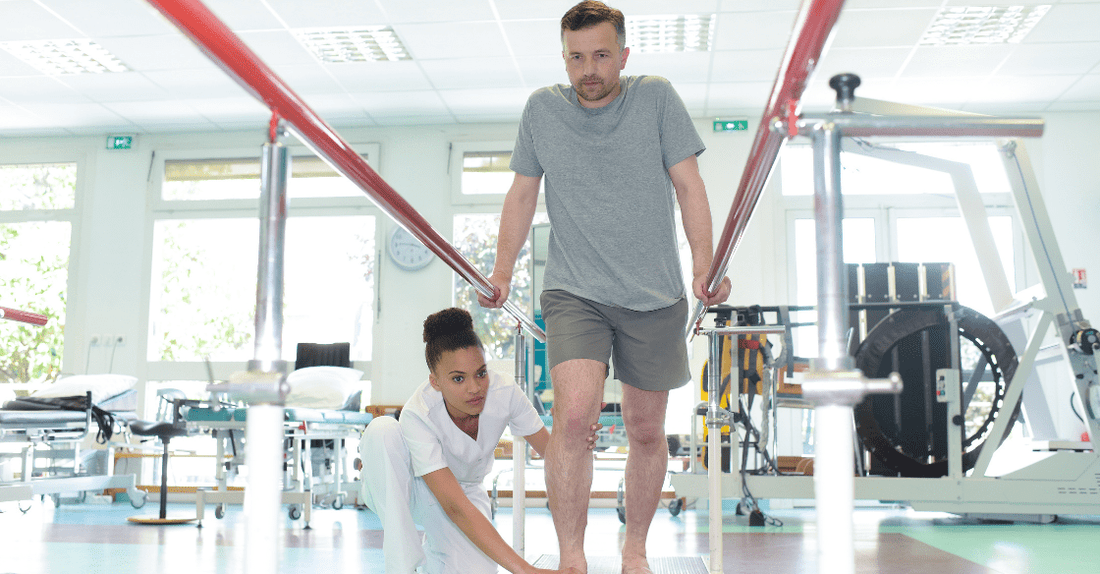If you have an injury that requires physical therapy treatment, weight loss might be the last thing you want to think about. You’ve got enough on your mind, what with that new knee or bum shoulder and all those fun new exercises your Physical Therapist has you doing.
But even if you don’t want to think about your weight, there’s a good chance you already are. Any injury that has curtailed your physical activity has probably also led to a certain amount of flabbiness that’s starting to bother you. You want it gone, and you want it gone now.
You want tips for weight loss during a time when it’s difficult to do serious exercise.
Exercises for Weight Loss: Bad News and Good
There’s bad news and good news here, and it’s really two sides of the same coin: Exercise alone is not enough for weight loss, and therefore, you don’t need to exercise to lose weight.
We always think of weight loss as a matter of burning more calories than we take in. While that’s true at a fundamental level, there are subtleties and complexities in the math—and in our underlying metabolism—that make the “calories out” part of the equation somewhat less reliable.
Basically, exercise doesn’t do as much to increase our daily calorie budget as we would hope. And so, focusing on exercises for weight loss is not the optimal way to reach our goals.
So How Do We Lose Weight?
It’s the diet that does it.
You can’t lose weight without controlling what you eat. But when we talk about diet, we don’t usually mean the type of “diet” designed specifically to create a big calorie deficit to shed pounds rapidly. That’s unsustainable, often unhealthy, and usually effective only in the short term, with the unwanted weight often bouncing back.
So here is the first, best, and always tip for how to lose weight and maintain that weight loss:
- Make a diet of healthy, nutritious, calorie-appropriate foods a part of your lifestyle, now and forever.
Yes, you still have to eat fewer calories than you burn if you want to lose weight, but it’s so much easier and more satisfying when you’re eating foods that don’t come from a vending machine or drive-thru window.
Most people can start and end their search with some variation of the DASH or Mediterranean diets. These are filling, heart-healthy diets centered around whole foods, including fruits, vegetables, whole grains, healthy fats, lean proteins, and moderate dairy.
We don’t want to make it sound too easy because eating this way involves planning, shopping, and learning to cook at least a variety of simple recipes. But if you can manage all that, and if you can stick to it, then the weight loss will follow naturally.

But You Still Need to Exercise
Wait, didn’t we say you don’t need to exercise to lose weight? We did. But we never said you don’t need to exercise.
Exercise is crucial to the long term health of your heart, muscles, bones, and joints, whether you’re trying to lose weight or not.
And so tip number two:
- Stay active in addition to your physical therapy program—as much as you can—with strength training, low impact exercises, cardiovascular workouts, and flexibility exercises.
Fortunately, you don’t have to be limited by equipment lack of gym access. You can do a full-body workout at home or search online for live virtual workouts. The options are endless.
The point is that you need to remain active.
Maintaining health is about a lot more than weight loss. But with a combination of a good diet and exercise, you’ll get that health and lose the flab at the same time.
Stay Informed
Going through physical therapy can get you in shape and reduce pain from an injury. Losing weight while doing physical therapy is a bonus, and following these guidelines will help you reach your goal. For workout modifications, exercises for isolated pain points, and more, follow PrePak's blog and video tutorials. We're with you every step of the way!

